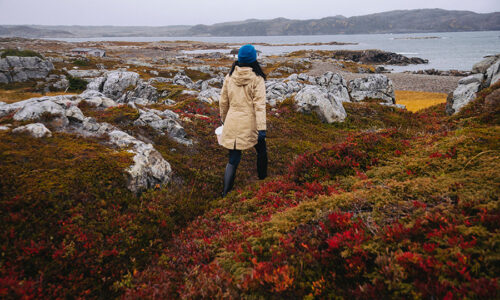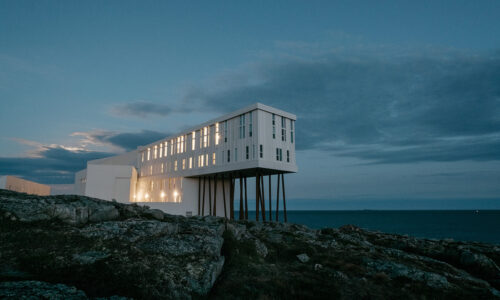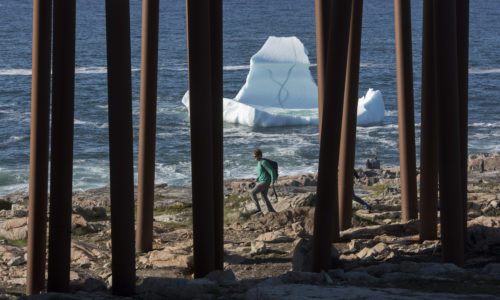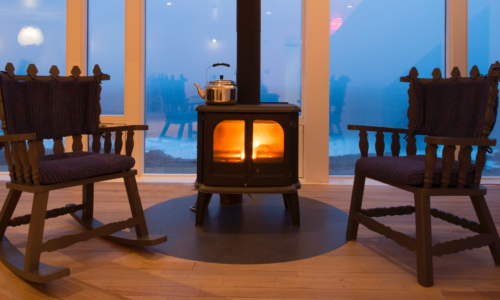In Nature | By Jill Brown | May 10, 2021
About the Fogo Island Caribou Herd
“The persistence of caribou on Fogo Island is a testament to the vision and hard work of local community members, conservationists, and wildlife agencies in Newfoundland.”
Quinn Webber & Eric Van der Wall, ‘A Brief History of Caribou on Fogo Island’, Codversations (August 2019)
The caribou herd of Fogo Island can be elusive. While they’re often spotted in fall and winter, snacking along roadsides and in open fields, they typically hide inland during the warmer months.
-
Fun facts about caribou:
Caribou in Canada have four distinct ecotypes that live in different areas and have slightly different ecologies. These include woodland, mountain, barren ground, and Peary caribou. In Newfoundland, we have woodland caribou, which live mostly in the boreal forest and coastal barrens – the two primary habitats on Fogo Island.
Did you know caribou are excellent swimmers? Swimming between the islands is a way of life for the Fogo Island herd. Their large hooves, which act as snowshoes on land, make excellent paddles in the water; and the hollow hair shafts, which keep them warm in winter, help them stay buoyant while swimming.
Caribou are a member of the deer family. They are the only species in this family where both the males and females grow antlers. Male caribous start growing their antlers in spring, so they’re fully grown in time for the fall rut, or breeding season. Females, on the other hand, start growing their antlers in late summer and then shed them the following spring. One theory about why they have antlers is so they can defend winter food resources against males, who usually lose their antlers in December or January.
Throughout Canada, wolves are the primary predator of caribou. In Newfoundland, where there are no wolves, coyotes and black bears are the main predators. On Fogo Island, coyotes are the only predator and, since they are smaller than wolves, coyotes only pose a threat to the newborn calves each spring and to older or sick adults.
Caribou are an iconic migratory species, with some herds in the Arctic travelling over 1,000 km during the migration period. However, not all caribou herds are migratory. On Fogo Island, the caribou are sedentary and do not make the same kinds of seasonal movements..
Caribou are an endangered species in Canada. However, the populations in Newfoundland are doing relatively well. In Western Canada, human disturbance and habitat destruction are thought to be the primary drivers of population decline, but the wild and relatively untouched land expanses in Newfoundland mean caribou here face fewer pressures than elsewhere.
Within the Fogo Island herd, female caribou greatly outnumber the males. And each May, many females return to the same area to give birth.
-
Complement your stay at Fogo Island Inn with a multitude of outdoor activities and excursions that present the opportunity to immerse yourself in the natural world and our island’s flora and fauna. The caribou follow their own schedule, but taking part in a guided hike, cabin experience, or traditional boil up can only increase the chances of sighting our four-legged friends. Contact our reservations team to submit an enquiry and begin planning your stay!
Source: Fogo Island Caribou Ecology Project, Wildlife Evolutionary Ecology Lab (Quinn Webber, Eric Vander Wal, Jack Hendrix)






